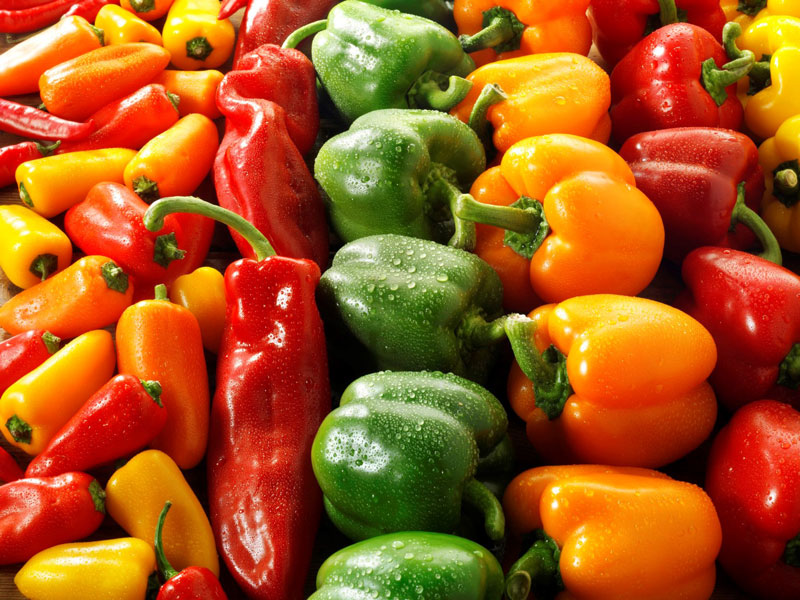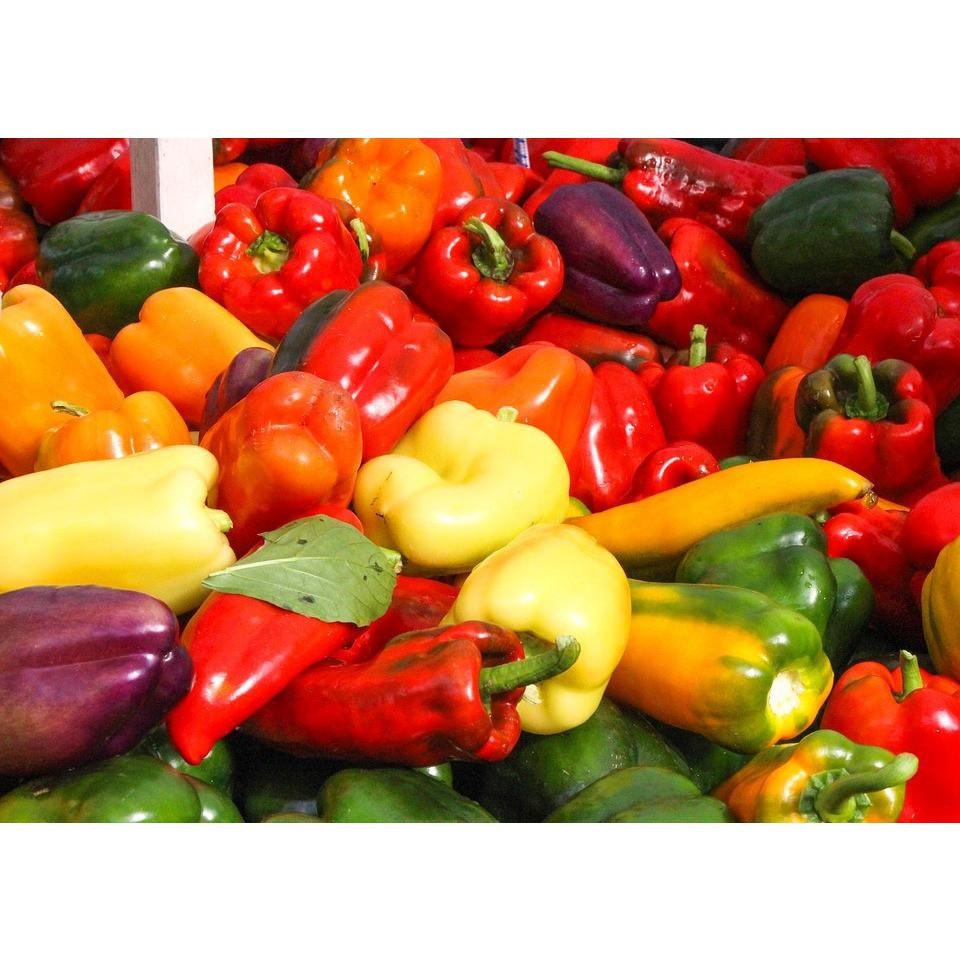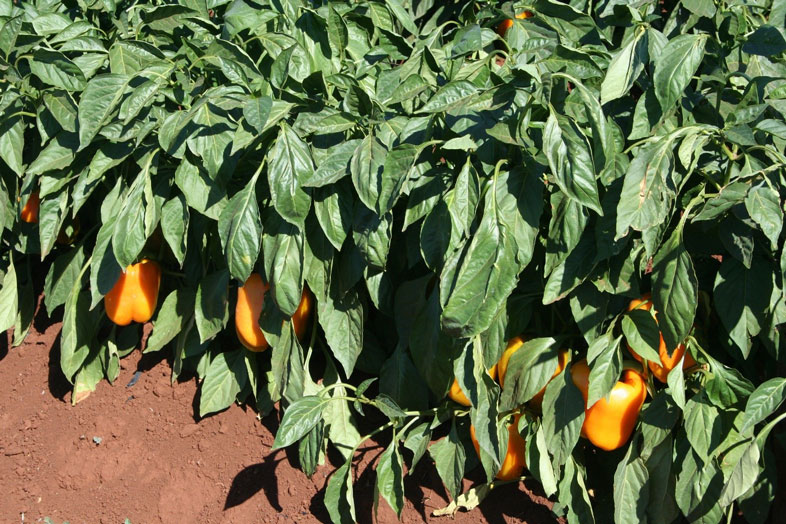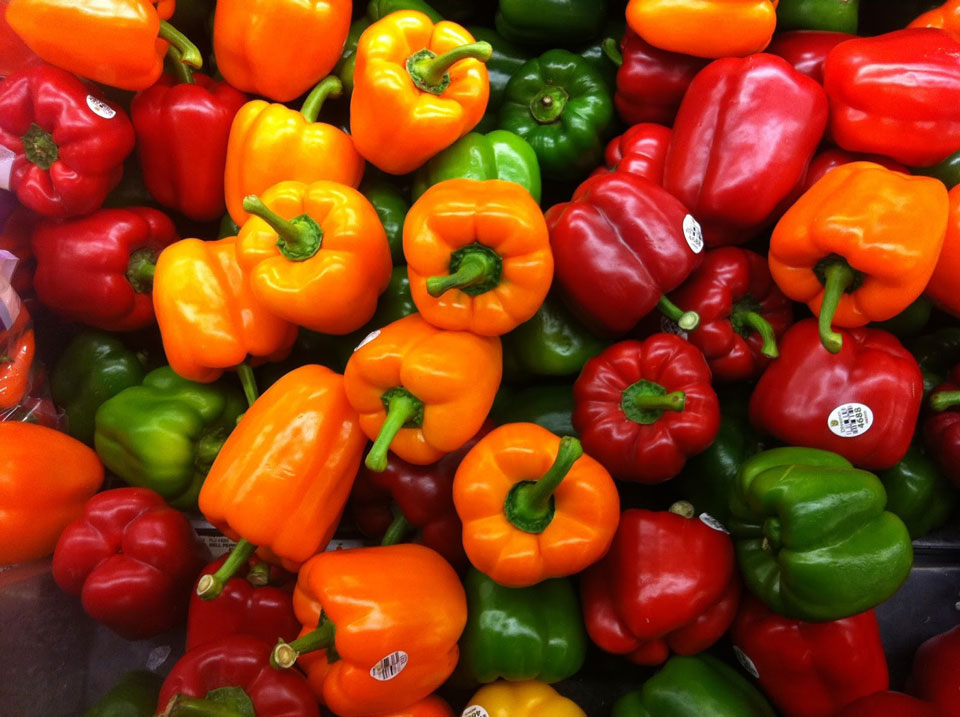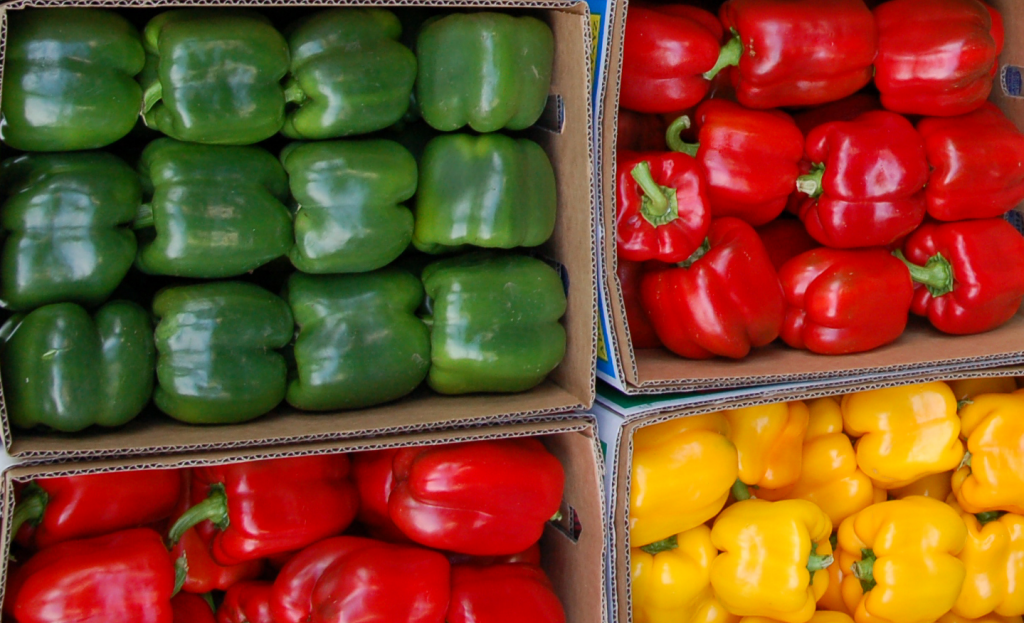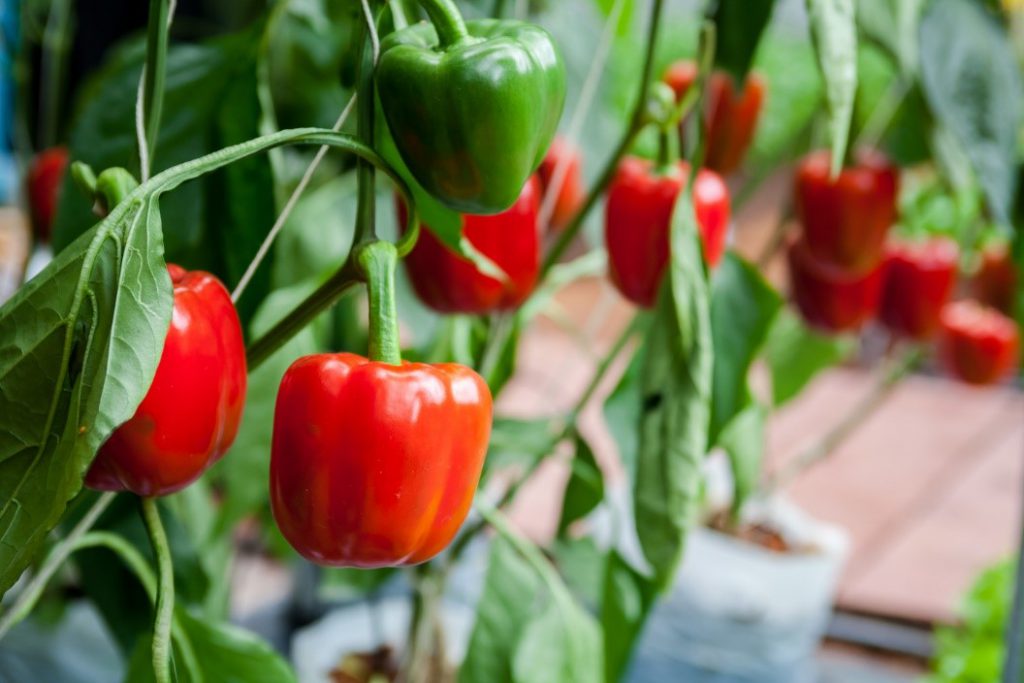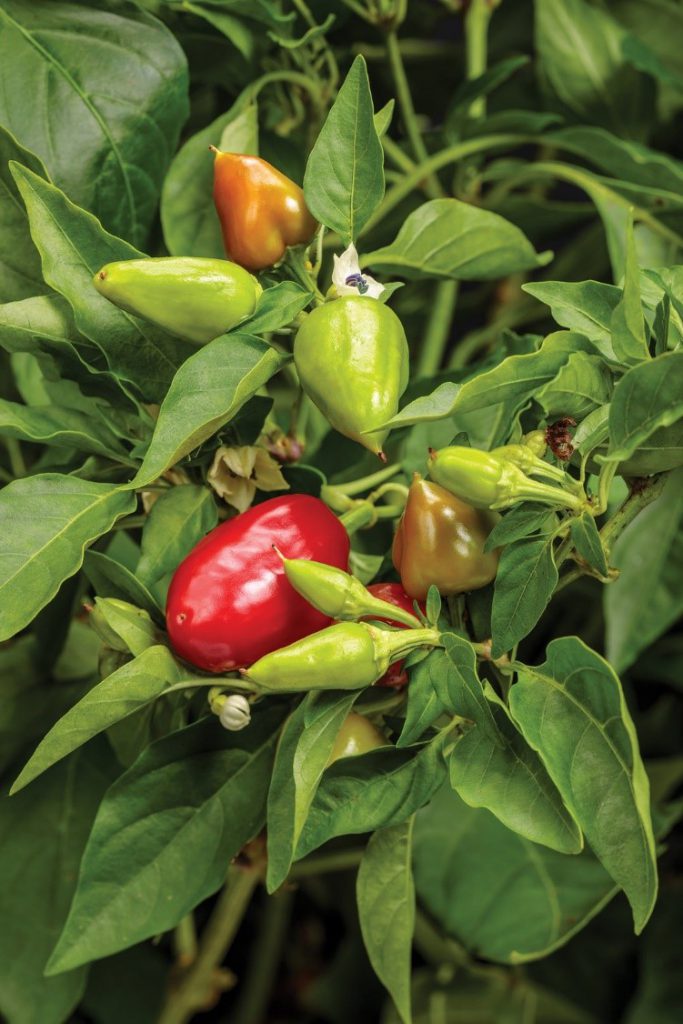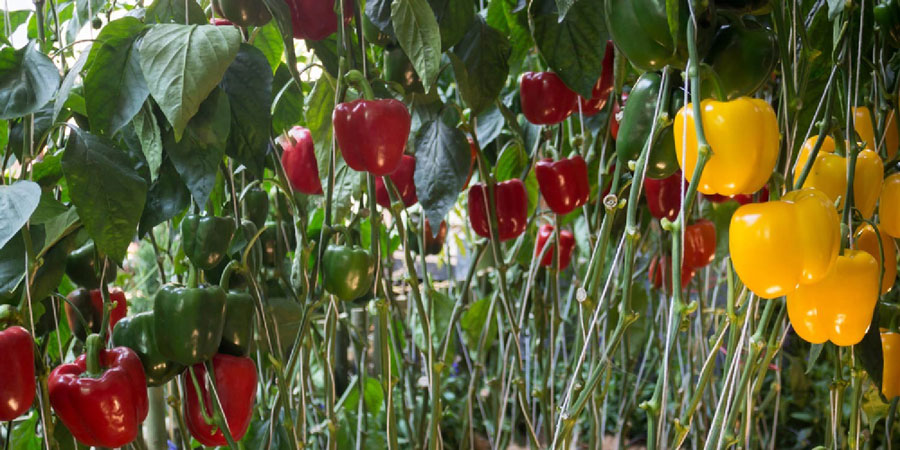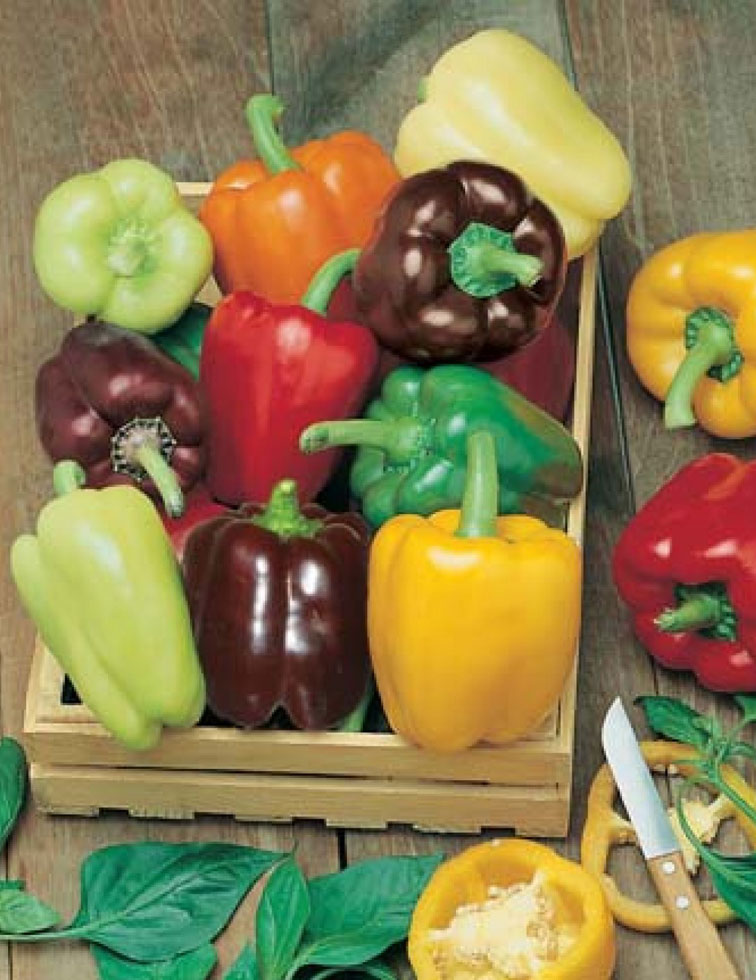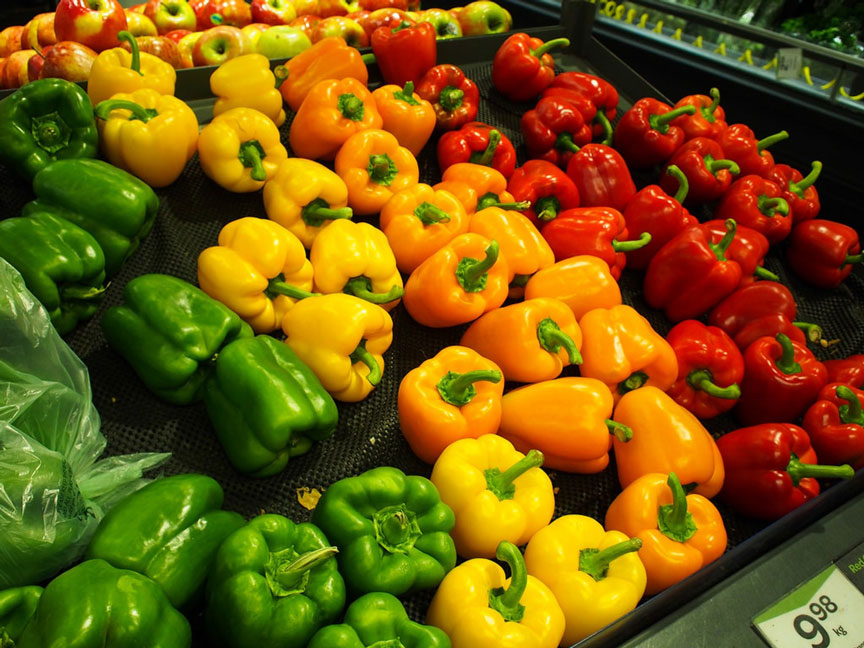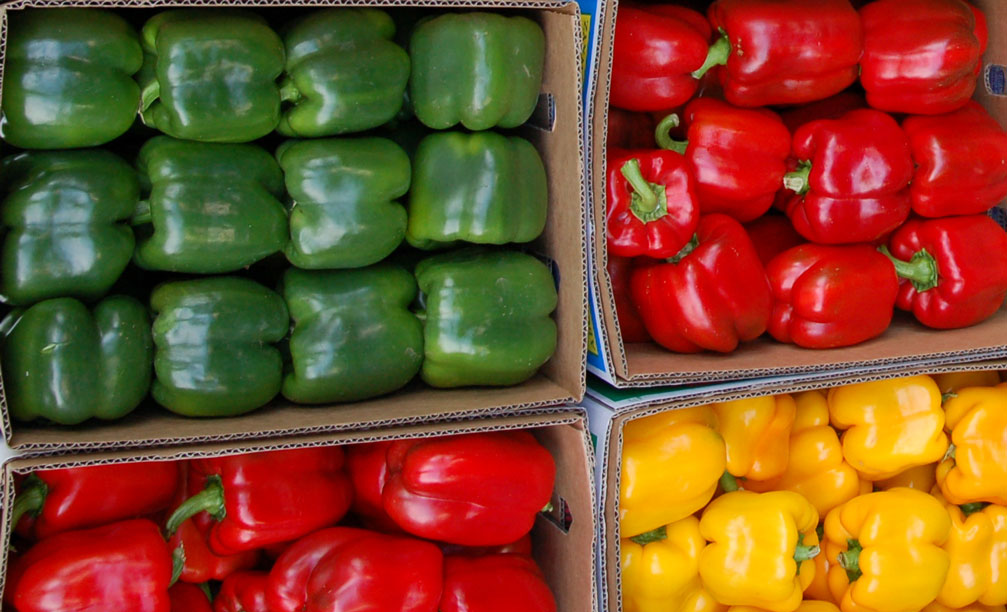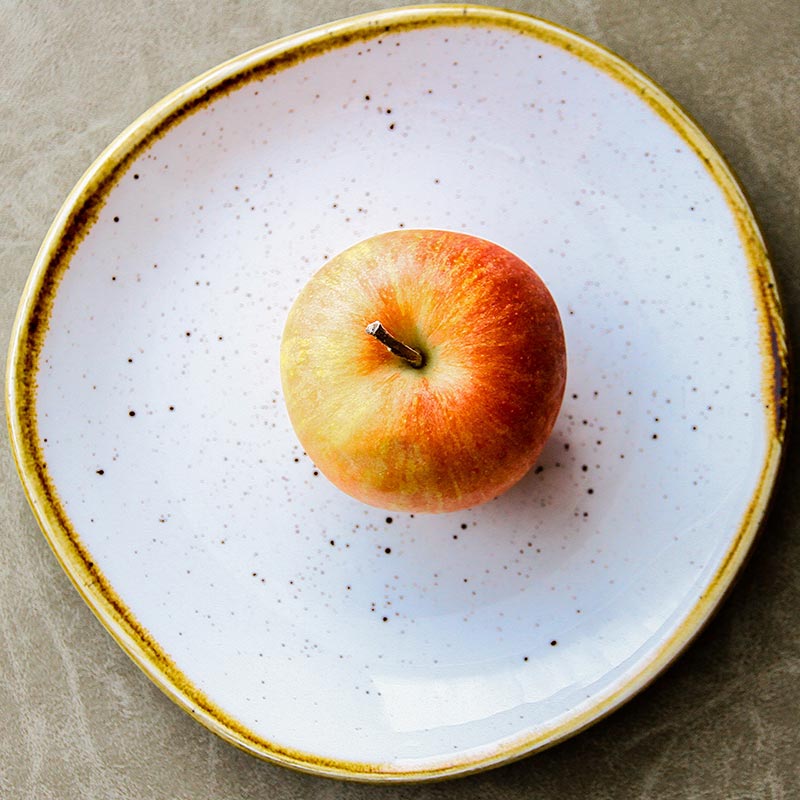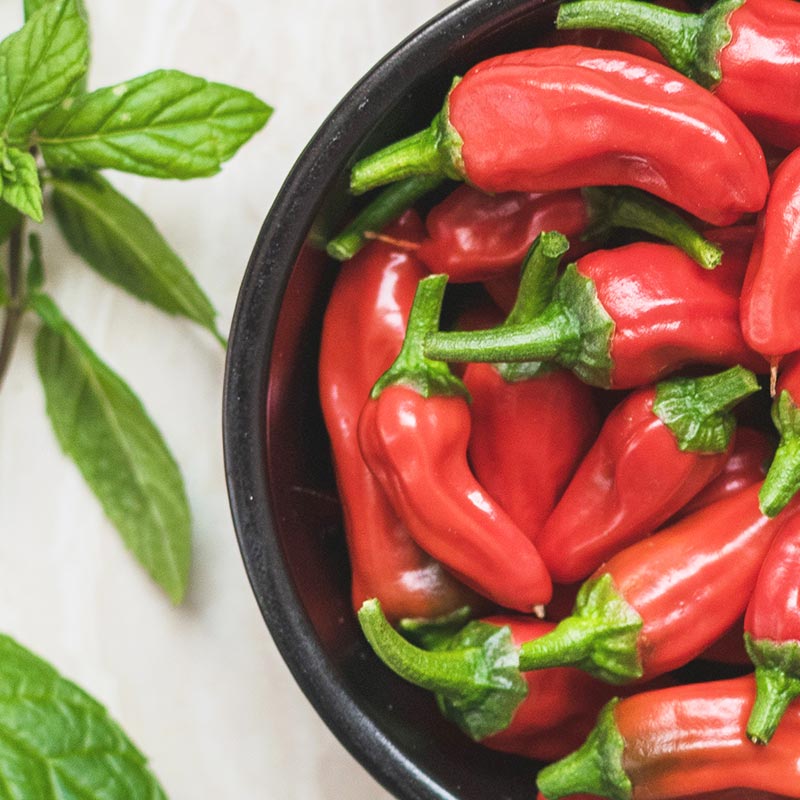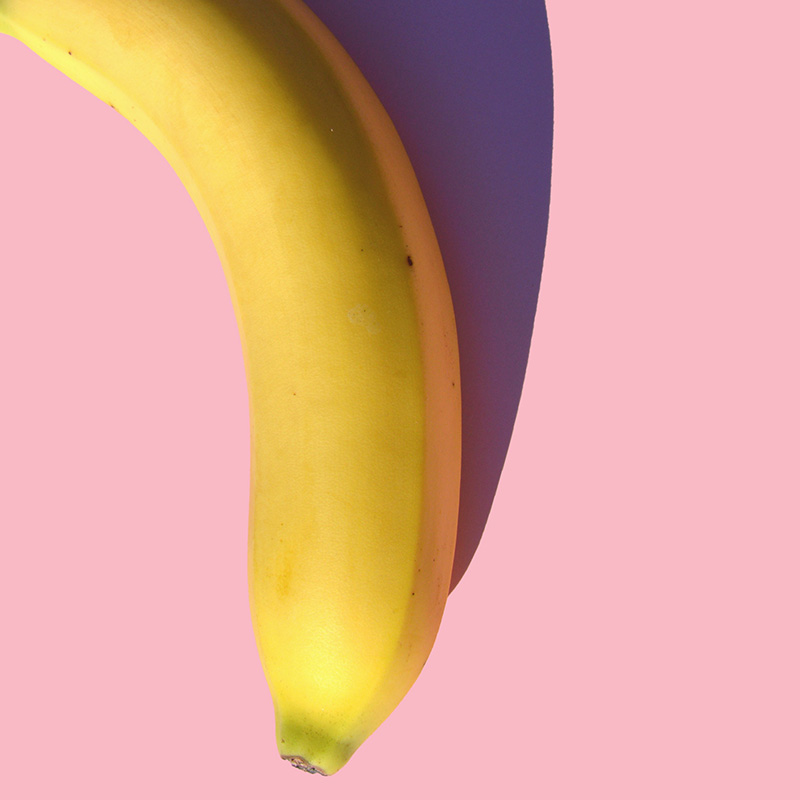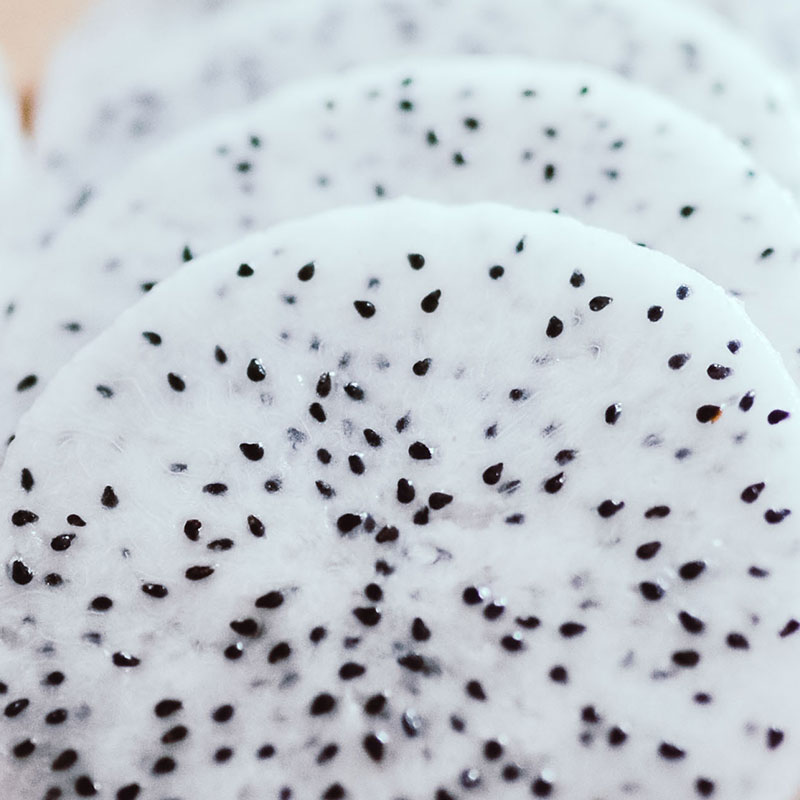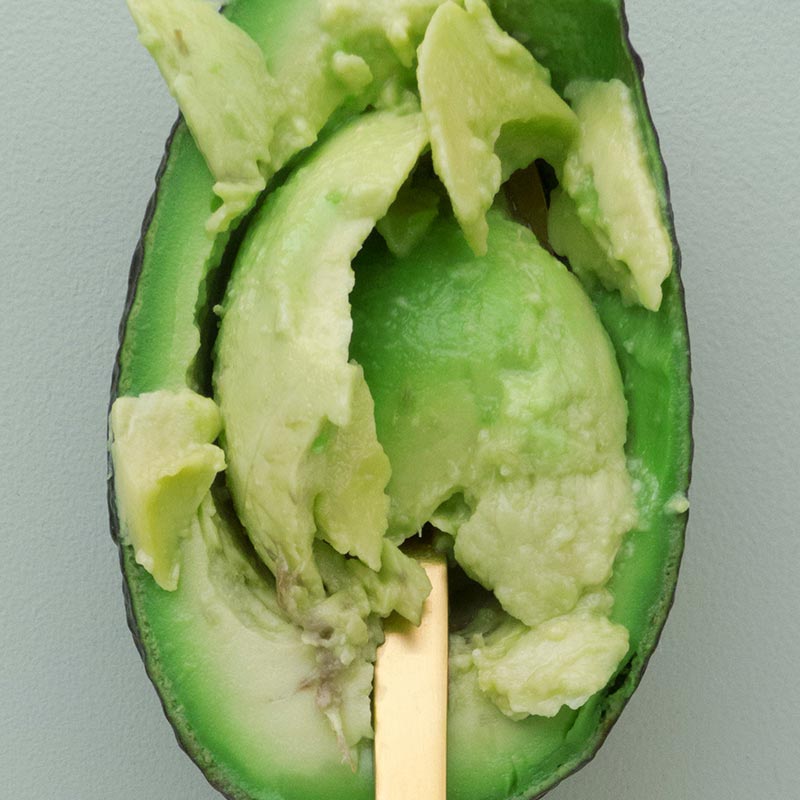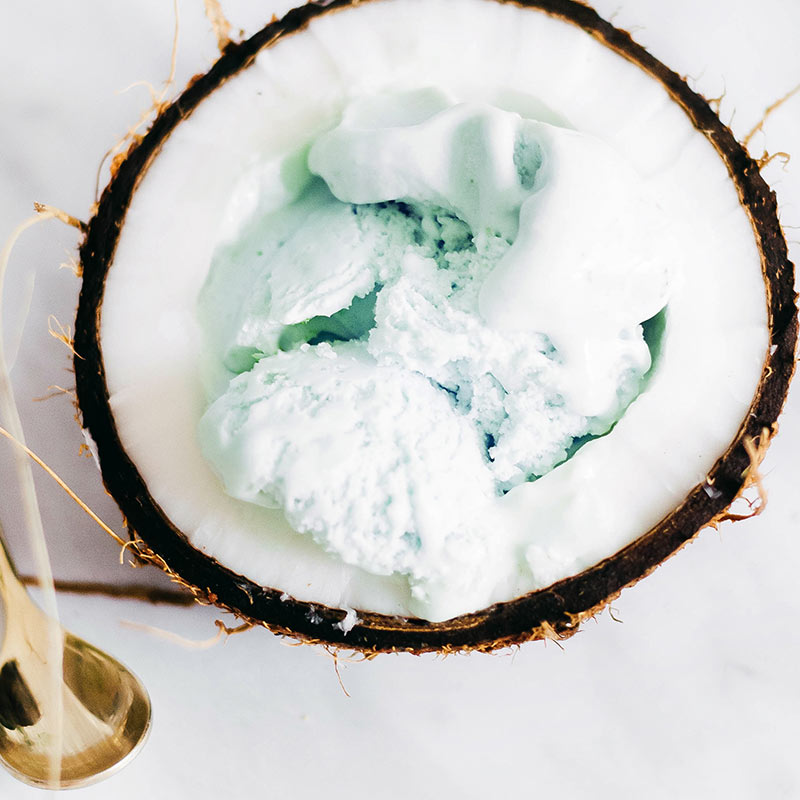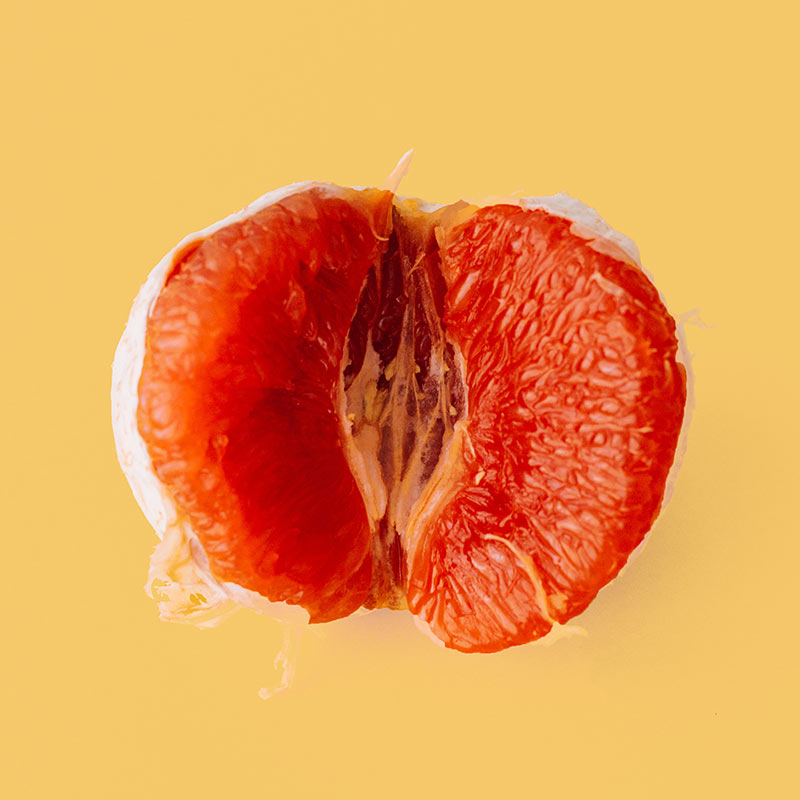Capsicum , the pepper, is a genus of flowering plants in the nightshade family Solanaceae. Its species are native to the Americas, where they have been cultivated for thousands of years. Following the Columbian Exchange, it has become cultivated worldwide and it has also become a key element in many cuisines. Capsicum species have also been used as medicines and lachrymatory agents.
Capsicum fruits of several varieties with commercial value are called by various European-language names in English, such as jalapeño, peperoncini, and peperoncito; many of these are usually sold pickled. Paprika(in English) refers to a powdered spice made of dried Capsicum of several sorts, though in Hungary and some other countries it is the name of the fruit as well. Both whole and powdered chili are frequent ingredients in dishes prepared throughout the world.
According to the United Nations Food and Agriculture Organization, global production of peppers (piper spp.) in 2017 was 690,467 tonnes, led by Vietnam with 37% of the world total (table). Indonesia, Brazil, and India were the other major producers.
In Indian English, the word “capsicum” is used exclusively for Capsicum annuum. All other varieties of hot capsicum are called chilli. In northern India and Pakistan, C. annuum is also commonly called shimla mirch in the local language and as “Kodai Mozhagai” in Tamil which roughly translates to “umbrella chilli” due to its appearance. Shimla, incidentally, is a popular hill-station in India (and mirch means chilli in local languages).


